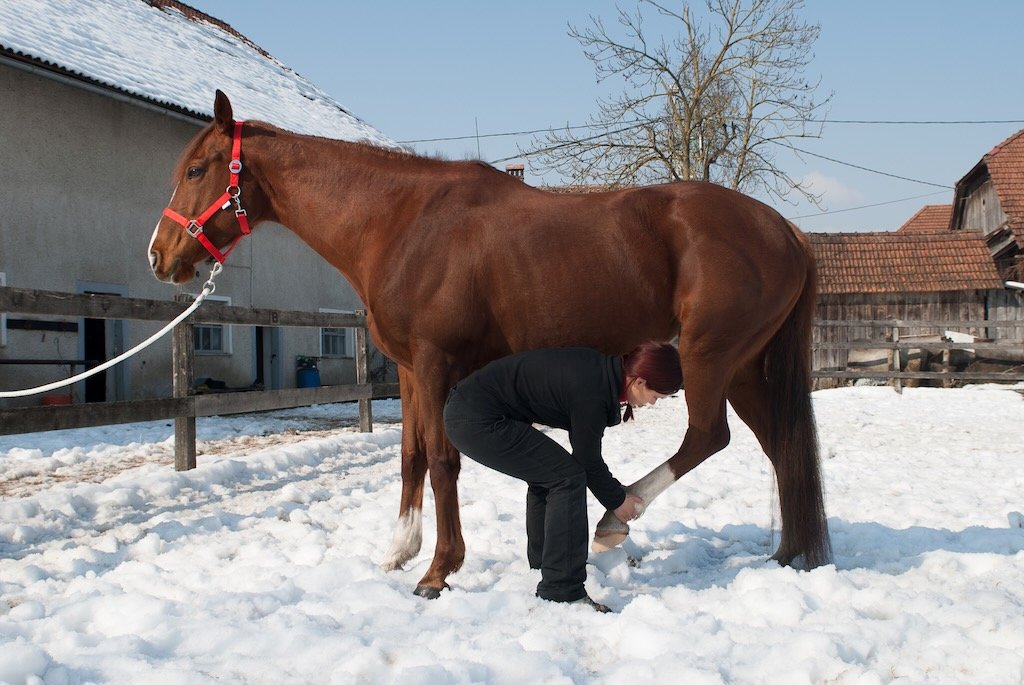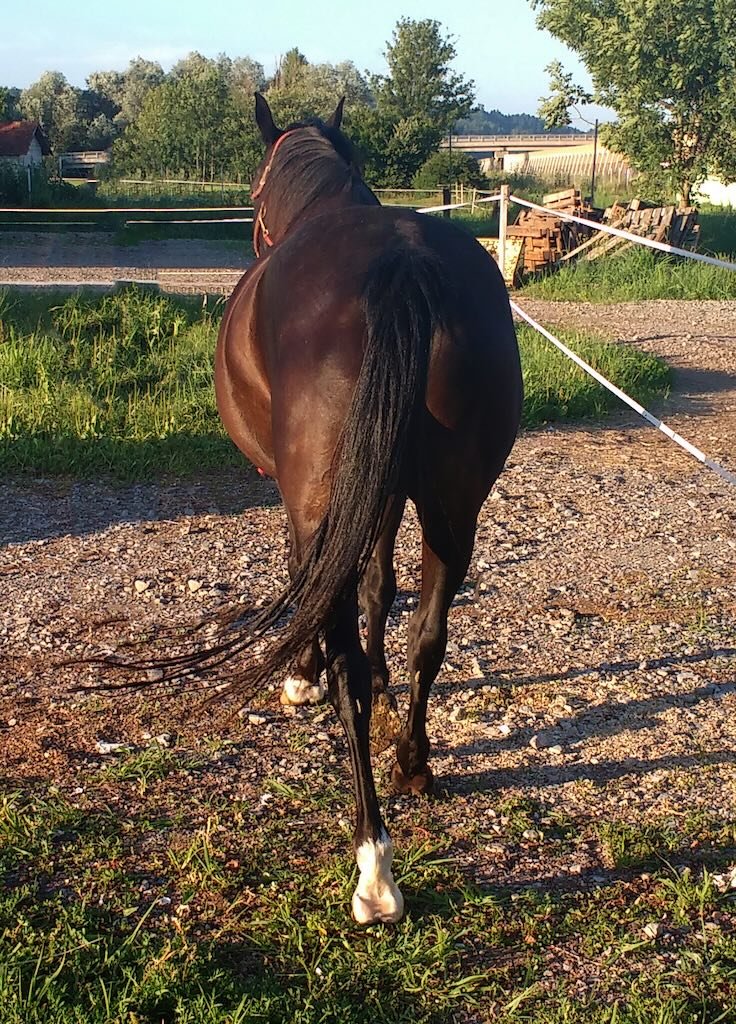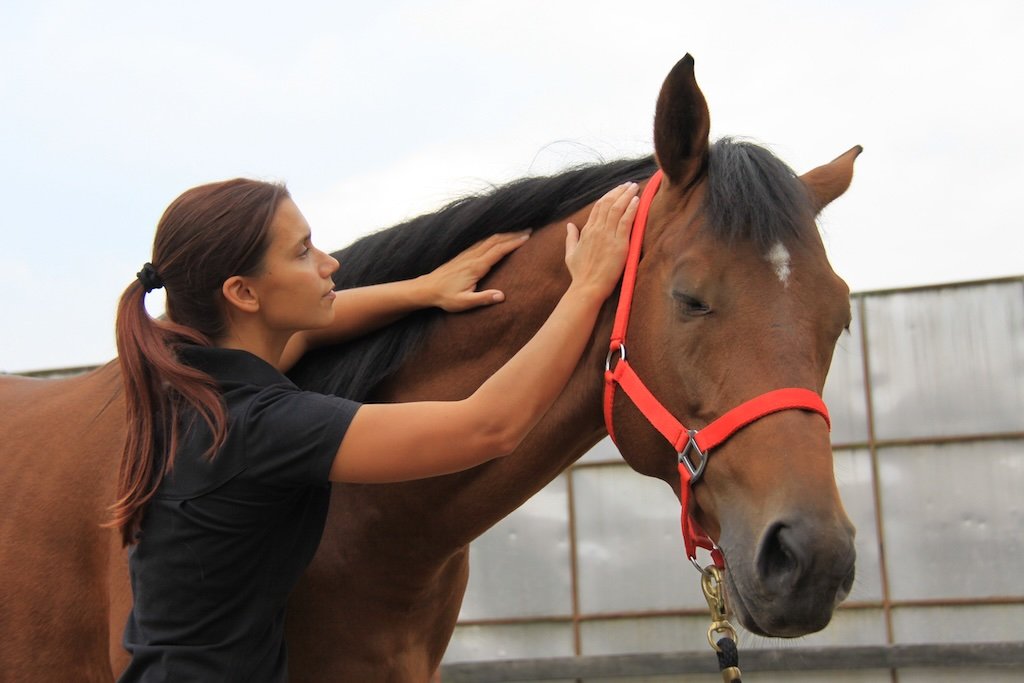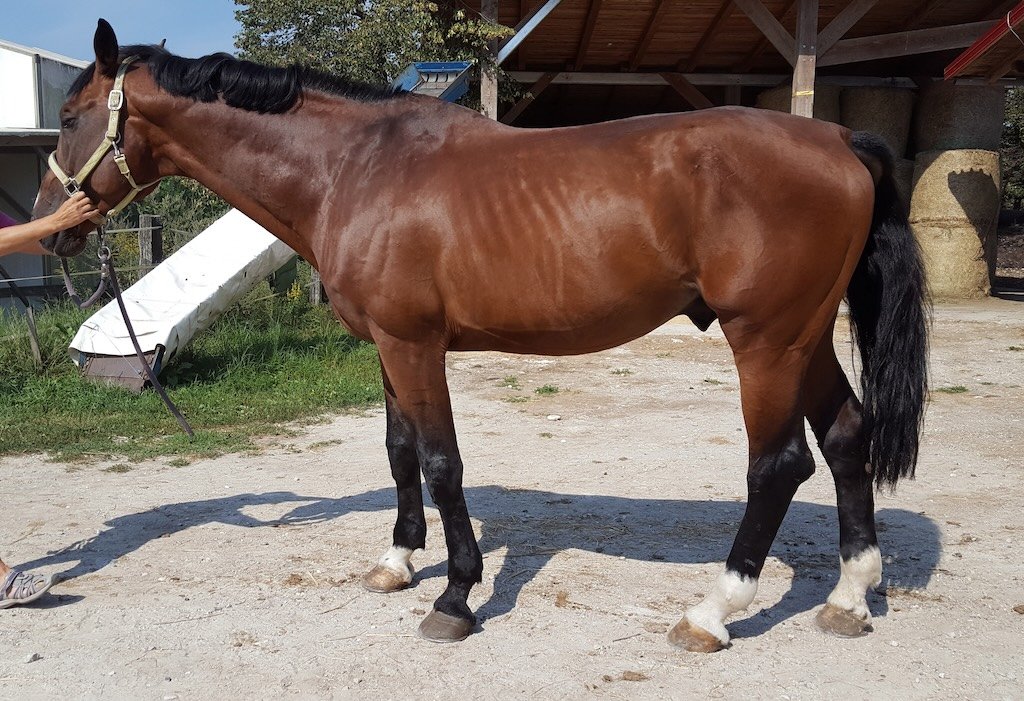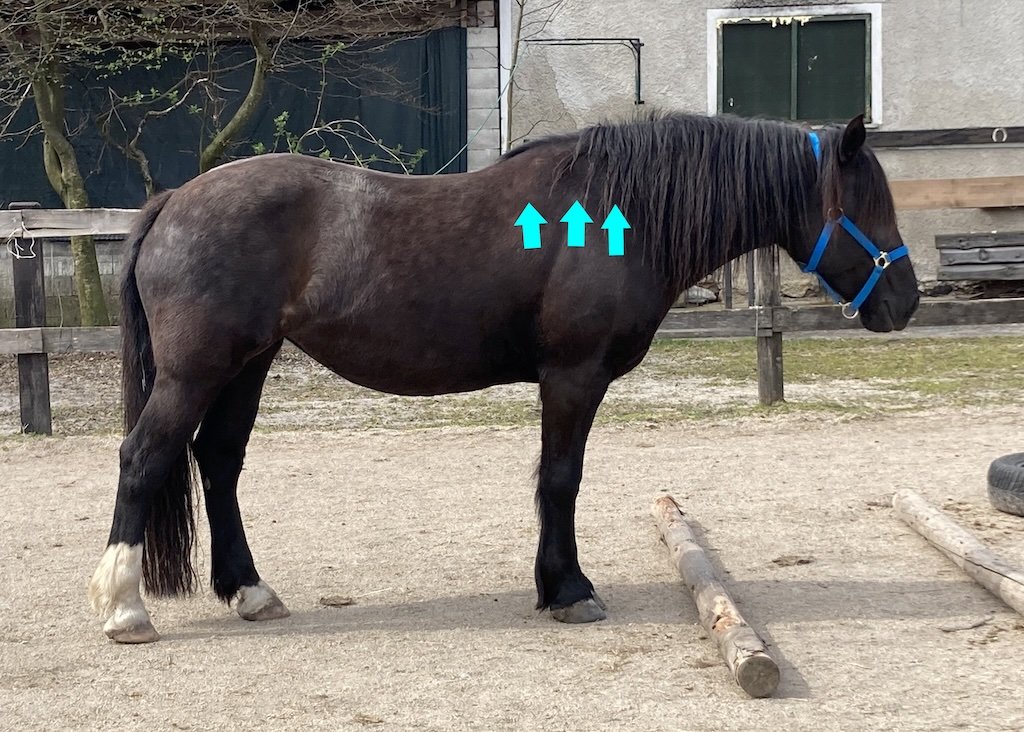When you pick up your horse's leg...
A healthy horse should be able to effortlessly stand on three legs while you pick up the fourth one. If this is a struggle, it is worth investigating.
Checking for stifle stability
Instability in the stifles is a very common, but often underrecognized, issue. Here are some things to look out for in your horse.
What's the story with hind limb rotation?
Rotation of the hind limb in walk is a very common sight in horses. There are many factors that contribute to it, and if we want to address the issue properly, we need to take a multi – pronged approach.
Can your horse relax his neck?
Just like us, horses carry tension in their neck and shoulders. Here is an idea to start exploring what happens if we ask the horse to let go.
Relax your neck
We tend to carry around excess tension in our neck and shoulders. In my experience, horses do the same thing. What happens when we let that go?
The pecs – more important than you think
The pectorals are an important group of muscles that we tend to overlook. Understanding a bit about how to recognise dysfunction in this area can help us make better training decisions.
What can the braciocephalicus tell us?
The brachiocephalicus can tell us a lot about what is going on in the horse’s front end, so it pays to be able to observe and palpate it.
Different types of muscle dysfunction
Did you know that muscle dysfunction comes in two specific flavours? This is why it matters to address both of them.
Neuropathic pain – what is it and why it matters
Not all pain is created equal. Neuropathic pain can have dire consequences on the horse’s well-being and is potentially the main culprit of explosive behaviour.
Stress and the thoracic sling
Stress is bad for so many things, including locomotive problems. A stressed horse will be more likely to overextend the base of his neck, causing many issues.
Tightness – what is the body protecting?
Tight muscles are most often a symptom, not a standalone issue. Whenever we are dealing with recurring tightness, we need to ask ourselves - what is the body trying to protect?
Not all muscles are created equal
Is there such a thing as too much muscle development? You bet! Here is why it’s important to differentiate between two major groups of muscles.
When addressing the body, address the feet too!
The feet impact the body and the body impacts the feet. When dealing with dysfunction, it is crucial to address both.
The neutral spine and range of movement
A neutral spine enables the horse to move with ease and suppleness and allows him to use his body in an energy efficient way.
The poll, TMJ and teeth triangle
The poll, the TMJ and the teeth influence each other in a big way, so it's important to always address all three when addresing one of them.
Five signs of hind end dysfunction
Problems in the hind end often go unnoticed, until we end up with an injury or a sore back. Here are some red flags to look out for.
Taking care of the poll
Prevention is better than cure. Implementing strategies to prevent poll issues from occurring is much easier than dealing with dysfunction after it occurs.
The poll – what can go wrong?
The poll has a huge impact on the entire body, which is why issues in this area can cause dental imbalances, problems down the neck and even all the way down to the feet.
Why we need to be very, very careful with horses' necks
The neck of the modern horse is a sensitive structure that can be damaged by improper riding. We need to be very careful not to create dysfunction in the neck.
Vikings and temple dancers
In terms of connective tissue properties, horses can be either temple dancers or vikings. Knowing what type of horse you are dealing with, can help you make better training decisions.
